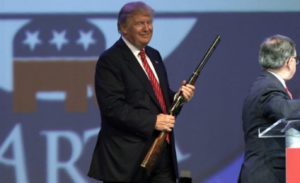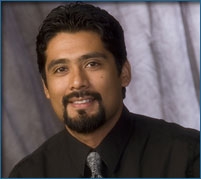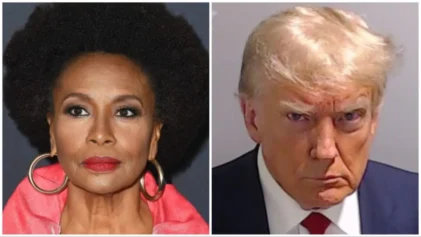
“Law and order must be restored. It must be restored for the sake of all, but most especially the sake of those living in the affected communities.
The main victims of these riots are law-abiding African-American citizens living in these neighborhoods….
There is no compassion in tolerating lawless conduct. Crime and violence is an attack on the poor, and will never be accepted in a Trump Administration….
The problem in our poorest communities is not that there are too many police, the problem is that there are not enough police.”
In the 2016 race, Trump has channeled Richard Nixon, who ran under a law-and-order platform devised by Republican strategist Roger Ailes. Ailes, who until recently was the head of Fox News, is now advising Trump. And as Trump is appealing to white nationalism, Nixon capitalized on white fear of Black criminality. As Atlanta Black Star reported, Nixon concocted the war on drugs to criminalize his enemies, and specifically to target and disrupt the Black community. Democratic and Republican administrations continued that war, which has resulted in more monitoring of Black communities.
“Here we don’t have to hypothesize. With law and order it is clear what happens to communities of color, particularly urban communities of color,” Victor Rios, Professor of Sociology at the University of California, Santa Barbara, and author of Punished: Policing the Lives of Black and Latino Boys (NYU Press, 2011), told Atlanta Black Star.
“It took off in the 1960s all the way to the 2000s, launching entire careers and wining elections based on law and order,” he added.
The Rockefeller drug laws were the first measures racializing drug dealers by targeting crack cocaine, leading to “punitive drug policies targeting Black and Latino communities that led to mass incarceration.”

Dr. Victor Rios, Professor of Sociology, University of California, Santa Barbara
Rios noted that in the 1960s, law and order was designed to attack the Black Power movement.
“There is a crackdown on the poor population, the poor population resists, and there is a further crackdown. This is where Trump is coming from. They know law and order is an effective tactic, specifically when the white public is afraid of a racialized population. In the 1960s you had white folks afraid of Blacks,” Dr. Rios said. “During the Nixon campaign, polls showed one of the top priorities of white voters was fear of Black crime.”
As a result, he notes, the nation’s prison population jumped from 300,000 in 1970 to 2.2 million today, he argued. Bill Clinton continued the law and order stance, at a time when politicians would lose elections if they were perceived as being weak on crime.
“[Former California Governor] Pete Wilson created some of the first harsh crackdowns on juvenile delinquents that heavily impacted the Black and Latino community in California,” he noted.
Meanwhile, as California opened 30 new prisons in 30 years, it only built two new universities.
According to Rios, Trump understands how to capitalize on public fear, and the desire to have someone regulate populations they perceive as being out of control.
“The law-and-order campaign never left our communities. ‘Stop and frisk’ is law and order,” he said, as is punitive treatment by police and the criminalization of Black men. “That’s why Black men are still being shot first, and police ask questions later,” he added.
A law and order policy from Trump would signal a continuation of mass incarceration, and a reversing of some attempts to reduce the nation’s prison population.
“Trump would expand, and continue to amplify that American tradition of punishing the poor,” Rios maintains.
In the absence of a welfare state and payments to the poor, a prison and probation system is the primary method of managing the poor, he said, adding that the punishment of the poor — particularly racialized populations who have been left behind by capitalism — is a worldwide problem.
“We have a global culture of cracking down on the poor. The U.S. has pushed this agenda for a long time, across the world…. Until you change the practice of punishing the poor, you will continue to have this issue,” Rios contends.
The police violence visited upon Black people is nothing new. Before his death, Malcolm X wanted to bring the U.S. before the U.N. for human rights violations.
In late 2014, U.N. human rights officials called out the U.S. for its racial profiling and use of excessive force.
“The Michael Brown and Eric Garner’s cases have added to our existing concerns over the longstanding prevalence of racial discrimination faced by African-Americans, particularly in relation to access to justice and discriminatory police practices,” said Mireille Fanon Mendes France, head of the U.N. Working Group of Experts on People of African Descent.
“We call for finalization without undue delay of the ongoing investigations into the cases, the delivery of justice and reparations for the victims concerned,” she said. “We urge a comprehensive examination of all laws that could have discriminatory impact on African-Americans to ensure that such laws are in full compliance with the country’s international legal obligations and relevant international standards.”
“African-Americans are 10 times more likely to be pulled over by police officers for minor traffic offences than white persons. Such practices must be eradicated,” said Mutuma Ruteere, U.N. Special Rapporteur on contemporary forms of racism, in an official statement.
“The laws of many of the States in the U.S. are much more permissive, creating an atmosphere where there are not enough constraints on the use of force. A comprehensive review of the system is needed — the enabling laws, the kinds of weapons the police use, the training they receive, and the use of technology such as on-body cameras to ensure accountability,” said Christof Heyns, the U.N. Special Rapporteur on extrajudicial, summary or arbitrary executions, emphasizing that international law allows for lethal force only when absolutely necessary to protect life.
Last year, the U.N. Human Rights Council issued a scathing report with recommendations on racial discrimination and use of excessive force, telling the U.S. to “take necessary measures to fight against discriminatory practices of the police based on ethnic origin,” and “double its efforts in combating violence and the excessive use of force by law enforcement officers based on racial profiling through training, sensitization and community outreach, as well as ensuring proper investigation and prosecution when cases occur.”
As Al Jazeera reported, the U.S. accepted 44 recommendations, supported 20 “in part” and rejected one recommendation, which was the creation of an independent commission to prosecute racially motivated crimes.
“You don’t have to worry about controlling the police if you control the people who control the police,” De Lacy Davis, a retired East Orange police sergeant and founder of Black Cops Against Police Brutality, told Atlanta Black Star.
Davis, who also served as an Essex County, New Jersey Police Academy instructor, said that on the local level, the people in charge of law enforcement are the mayor or the police chief.
“Because the police chief is the highest ranking official at the local level and is supposed to enforce the law. But they get caught up in the politics, because to be police chief they have to be political. And we rarely engage in politics; we are usually window dressing,” he said.
“Some of the solution is holding Black people accountable — I’m talking about Black elected officials. They’re not being held accountable, they’re playing politics. They’re loyal to the system,” Davis argued. “There needs to be systemic change because racism is endemic to the system. In New Jersey, we are moving towards civilian oversight; we have a consent decree.”
Ultimately, Davis says, the communities have to determine how they want to be policed.

Sgt. De Lacy Davis, Black Cops Against Police Brutality
“There are 18,000 police departments across the country,” Davis said, arguing that there are too many. “Second, the crime reports are voluntary, so we don’t even have a gauge to measure the magnitude of the problem. I don’t think they want to know,” he added, referring to the statistics on police-related fatalities that police departments voluntarily submit to the federal government. “We know from science, from mathematics and statistics that you measure everything. That gives you a cost-benefit analysis. Out of 18,000 departments, only 1 percent respond, and we are making decisions based on the 1 percent,” Davis noted, calling for mandatory submission of such data as a precondition for receiving federal funding.
Meanwhile, there is a disincentive for police officers to call for internal reforms of the police.
“This is no longer the land of the whistleblower. Edward Snowden proved that. There’s no witness protection program,” Davis said. “The Justice Department only prosecutes 4 percent of the time. The best we get from the Justice Department is a consent decree. The moment the consent decree has ended, it’s back to normal,” he added.
Davis calls for pressing the restart button on policing, including a nationalization of standards.
“You can’t reform this system. You have to dismantle and redo it, but communities have to decide what they want. Part of it is there has to be protection for whistleblowers. The disincentives must be removed,” he noted. “There must be civilian oversight; we have to know what they’re doing. There must be a national database so they [bad police officers] can’t run to another department and do the same thing. There must be a national standard for what is good police work. So we should nationalize that,” Davis added.
He also calls for local level residency requirements for cops — some cities have a 1-year requirement, others mandate 5 years.
“You have to plant seeds, roots in the community,” he said.
Davis also believes police officers should be held accountable for their behavior, noting that when police departments are sued for brutality and misconduct, there is an incentive to protect bad officers. Further, he stresses the need for community policing in Black neighborhoods.
“One of the things we were taught is it takes 20 years to build relationships, but [it] can take only two minutes to destroy the work. If you have the support of a police chief it could take five to seven years to implement community policing, but if you don’t have the support it can take 20 years,” he said. “What has to be built in the system is, this is how we have to treat the community we were in. I want to see their demeanor, I want to see how they treat children,” Davis added, calling for a diversion of our children form the system.
The former cop, educator and activist also pointed to the effectiveness of curbside adjustment — an alternative to arresting juveniles for minor offenses when an officer arrives at the scene — and selective enforcement, which involves discretion by police and prosecutors in deciding whether and how to punish someone for violating the law.
“I don’t want to minimize the dangers police officers face every day. We face the worst of society every day. Some of what should happen in changing the police system is police officers have to be properly debriefed. The stigma has to be taken off someone having a crisis and emotional breakdown due to the stressors of their job. Stress is a killer and causes breakdown over time. So maybe you are trigger happy and having a breakdown,” Davis added, arguing that it is necessary for the department to assess an officer’s mental health.
People in neighborhoods of color want the police, Rios believes. The problem is that these communities suffer from what he calls the “underpolicing-overpolicing paradox,” in which they receive too little policing when they need it, and too much when they don’t need it.
“For every cop, you should hire a social worker,” he said, in a policy of law and order that also provides care, support, therapy and nurturing. “In order to keep law and order, you need services, and people are not getting those services.”
Mentoring, social work and employment programs would cost $12,000 per person, per year, Rios argues, while it costs $30,000 or more per year to incarcerate someone.
“Poor Black and Latino communities never had true fair policing,” Rios said. “We need a fair and balanced system. We need training, ethnic studies, not just community policing. We need to reconstitute the identity of policing so they believe they are service providers,” he added.


